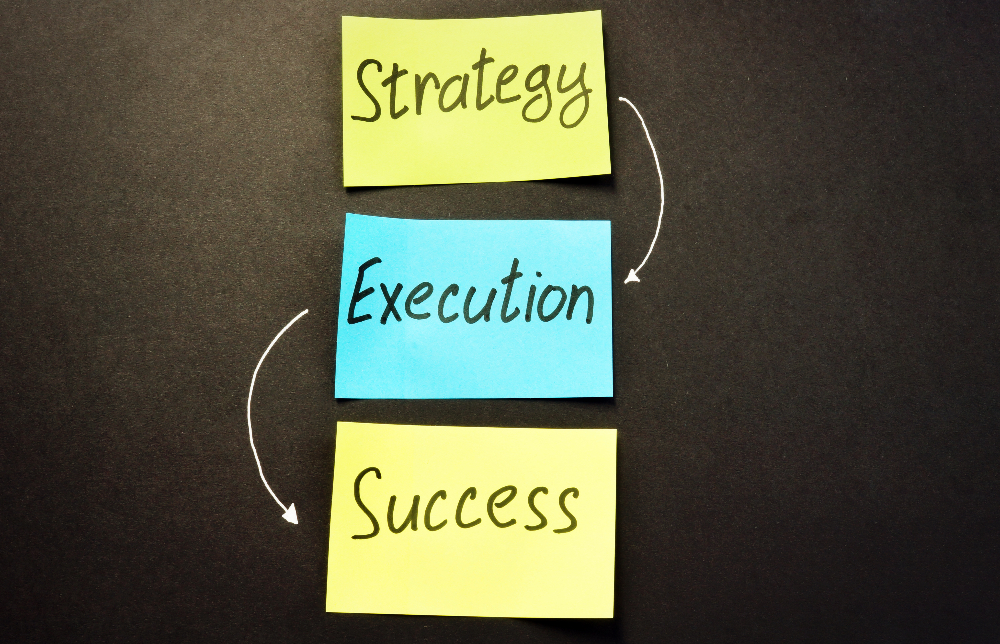
It Is Important to Close the Strategy Execution Gap
Across industries, too many strategies look compelling on paper yet crumble in execution. Executives invest days — sometimes weeks — crafting a clear direction in executive strategy retreats, only to watch their plans stall once they collide with the day-to-day realities of how work gets done. This breakdown is not a mystery. Project postmortem data consistently shows that execution fails less because of flawed strategy and more because organizations lack the clarity, alignment, and accountability needed to turn intent into action.
The strategy execution gap occurs when promising plans encounter ambiguous priorities, misaligned incentives, and inconsistent leadership behavior. In our own action learning leadership development work, we see the same pattern: execution becomes achievable only when leaders design an environment where follow-through is unavoidable.
Research Reinforces the Stakes
Strategic clarity without operational alignment is a short-lived advantage.
The core question becomes unavoidable: Is your strategy designed — and supported — for long-term success?
It Is Difficult to Close the Strategy Execution Gap
Successful and consistent strategy execution across an organization is easier said than done. And not surprisingly, companies that struggle to close the strategy execution gap report weaker performance.
3 Steps to Close the Strategy Execution Gap
If you want to close the strategy execution gap, follow these three field-tested leadership steps.
Most organizations rely on a predictable cascade: the C-Suite communicates strategic imperatives to senior leaders, who repeat the process with their teams. While cascading is necessary, it is rarely sufficient unless it includes rigorous two-way constructive debate. The frontline often sees execution risks long before executives do, and unless those insights are captured and incorporated, strategies remain aspirational rather than operational.
That’s why investing real time — not symbolic time — in strategy translation is what makes all the difference. To create clarity, expose misalignment early, and build ownership where it matters most, stakeholders at every level should be guided to:
Teams that excel at strategy execution create conditions where employees understand exactly how they contribute to enterprise priorities and have the authority and support to deliver results. Leaders play a critical role here. Their job is to create strategic guardrails, clear expectations, and a consistent rhythm of accountability that keeps the organization aligned without stifling initiative.
In practice, empowering employees to execute strategy well means focusing leadership time on the levers that truly matter:
The Bottom Line
Closing the strategy execution gap is less about drafting the perfect strategy and more about embedding execution into the organizational DNA by actively involving employees in strategy design and implementation. Are your leaders ensuring that strategy execution becomes less of a hope and more of a habit — a disciplined, measurable path from strategic vision to strategic achievement?
To learn more about successful strategy execution, download 3 Big Mistakes to Avoid When Cascading Your Corporate Strategy
Explore real world results for clients like you striving to create higher performance